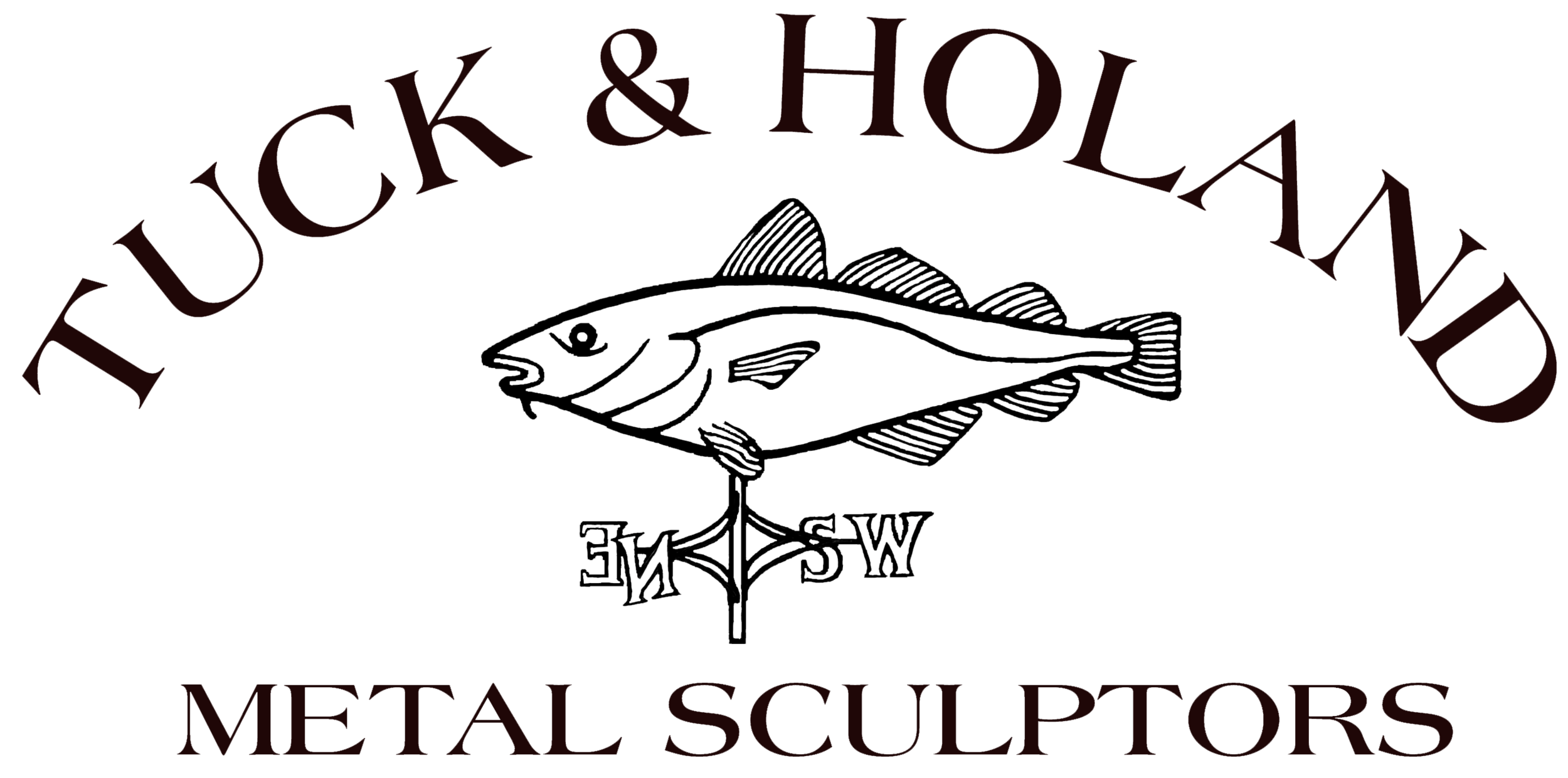History
The studio got its start back in 1974, when Travis Tuck created his first weathervane as a prop for the movie Jaws, which was filming near his home on Martha’s Vineyard. In 1997, Anthony Holand joined the studio and in 2002, they proudly announced the formation of Tuck and Holand Metal Sculptors. Travis lost a valiant battle with cancer later that same year.
Over the years, hundreds of evocative figures - some drawn from nature, some from contemporary life - have been commissioned by private owners and businesses who appreciate this unique artistry and know that they own something which will last for generations, as it grows in value.
Ironically enough, one of those weathervanes was for Steven Spielberg himself, the director of Jaws. Twenty-two years after it all began, he commissioned a four foot copper velociraptor dinosaur from his movie Jurassic Park for his estate on Long Island.
The Tuck & Holand Artists
Anthony Holand (1976-Current)
Raised in Washington State, Anthony Holand recognized his passion for metal sculpting early in life. While harvesting wheat and barley on his family farm, Anthony found himself drawn to the metal that a working farm produces as a means of artistic expression. Early work in stainless steel and found objects, developed into work with lost-wax bronze casting. The desire to develop his talent and skill with sculpture was an emphasis for Anthony in college and beyond. His love for metal sculpting continued to develop.
A trip to Martha’s Vineyard in the summer of 1996, held a surprise opportunity. Celebrity sculptor, Travis Tuck, was seeking an apprentice, and Anthony’s experience and natural ability made him the logical choice among many applicants.
As an integral part of the Travis Tuck studio, Anthony had worked on over 50 custom weathervanes. His input and sculpting was an important part of the studio completion of the largest full-bodied weathervane in the world: The Nittany Lion weathervane commissioned for Penn State’s Beaver Stadium. “Anthony did the Lion’s Share,” said Tuck.
In 2002, Travis proudly announced the formation of a new enterprise: Tuck & Holand Metal Sculptors. This was done in recognition of his former protégé’s level of accomplishment and in the hopes that Anthony’s talented hands would guide the studio into the next generation. 18 years later, Anthony has exceeded all expectations.
“My work begins with a flat sheet of copper and ends with an heirloom-quality piece of art built to last for centuries, all accomplished completely by hand,” says Anthony Holand. “This is especially satisfying with the custom weathervanes, where I bring to life a design that has real significance for the family, individual, or business, we are working with.”
Using the traditional copper repoussé technique to create unique designs, Anthony has realized his artistic and personal vision.
Travis Tuck (1943-2002)
Travis Tuck was born in New York City and would learn his craft there 25 years later. After a stint in the Army, studies at NYU and a summer working on Martha’s Vineyard, he took a part-time job with noted Dutch artisan, Hans Van De Bovenkamp-an internationally recognized metal sculptor. He spent four years developing his skills sculpting alongside Van De Bovenkamp on huge architectural metal pieces and managing the production schedule for the busy studio. Before long he realized his own artistic vision in a small studio on 28th street. A year later, he was still thinking of his experiences on the Vineyard and moved there to live and work in 1970.
Travis continued to sculpt, and was instrumental in forming the Martha’s Vineyard Artworker’s Guild. The Guild was a seventies-style artist’s collective, located in an old building on State Road owned by James Taylor and Carly Simon. Travis produced sculptures in copper and wrought iron, but had yet to build a weathervane until 1974, when he obtained the commission to create a shark to top Quint’s shack for the film “Jaws”.
This weathervane changed the course of his career and almost half a century later, his weathervanes continue to grace public buildings and private homes around the world. In his prime, Travis was considered the world’s premier weathervane artist; and in this regard, is generally credited with reviving the copper repousse technique.
Tuck explained, “Most weathervanes are fashioned by hammered sheets of copper into molds made from an original wooden carving. My technique is entirely freehand, here is never a mold. This makes every one of my weathervanes an entirely new sculpture. Each hammer blow is a part of the creative process.”
Travis Tuck died on November 18, 2002, at his studio/home in Vineyard Haven of mesothelioma.



